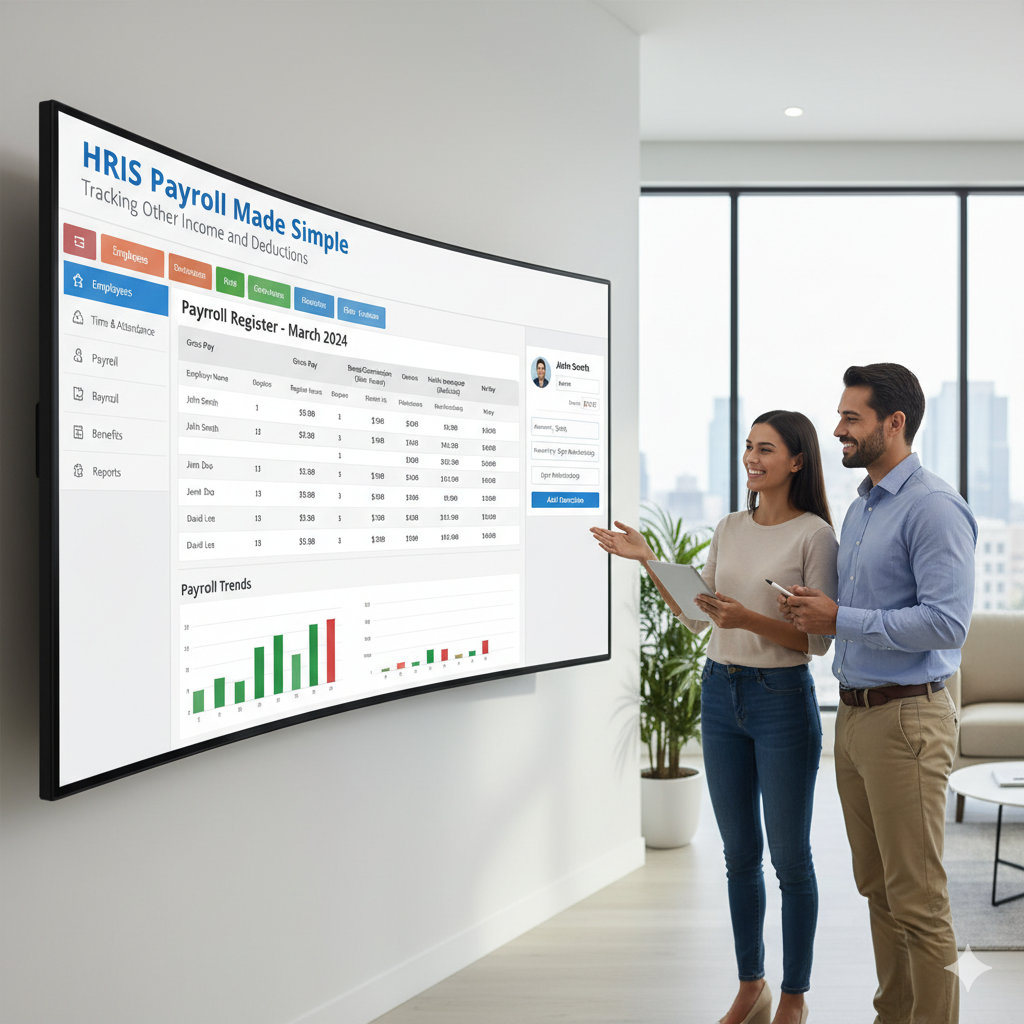Address
Kaypian, San Jose Del Monte City, Bulacan Philippines
Work Hours
Monday to Friday: 8AM - 6PM
Weekend: 10AM - 5PM
Address
Kaypian, San Jose Del Monte City, Bulacan Philippines
Work Hours
Monday to Friday: 8AM - 6PM
Weekend: 10AM - 5PM


Integrated HR. Accurate Payroll.


Integrated HR. Accurate Payroll.

Managing employee payroll is one of the most critical—and complex—functions in any HR department. Between calculating salaries, bonuses, allowances, and deductions, HR teams often spend countless hours on manual adjustments and cross-checking spreadsheets.
That’s where a Human Resource Information System (HRIS) comes in. Modern HRIS solutions simplify payroll processing by automating calculations, including “other income” such as bonuses or allowances, and deductions like taxes or loans. The result? Faster payroll runs, fewer errors, and happier employees.
In this article, we’ll explore how HRIS payroll systems make managing other income and deductions simple, accurate, and efficient.
In HR and payroll terms, other income refers to any earnings an employee receives outside their regular basic pay. These can include:
Tracking these components manually can be error-prone. An HRIS payroll module automates the entire process—ensuring that all forms of income are accurately reflected in each pay cycle.
Just as “other income” adds to an employee’s pay, deductions are subtractions that need to be carefully calculated and documented. Common deductions include:
With an HRIS, these deductions are automatically computed based on predefined rules and government regulations. This ensures compliance and eliminates repetitive manual calculations.
An integrated HRIS payroll system streamlines income and deduction tracking through automation. Here’s how it works step by step:
To effectively manage other income and deductions, an HRIS should include:
| Feature | Purpose |
| Configurable Payroll Components | Define different income and deduction types (bonuses, taxes, etc.) |
| Automated Payroll Rules | Apply formulas and tax tables automatically |
| Employee Self-Service Portal | Allow employees to view payslips and income details |
| Compliance Reports | Generate tax, benefits, and contribution reports easily |
| Audit Trail | Track payroll changes for accountability and transparency |
Without HRIS: HR manually adds each bonus, allowance, and deduction—risking errors.
With HRIS: The system automatically calculates gross and net pay:
This ensures accuracy and consistency with every pay period.
A modern HRIS payroll system takes the complexity out of managing salaries, other income, and deductions. By automating these processes, HR teams gain accuracy, speed, and compliance—while employees enjoy transparency and trust in every paycheck.
Whether cloud-based or on-premise, implementing HRIS payroll automation is one of the smartest investments for improving efficiency and employee satisfaction in any organization.